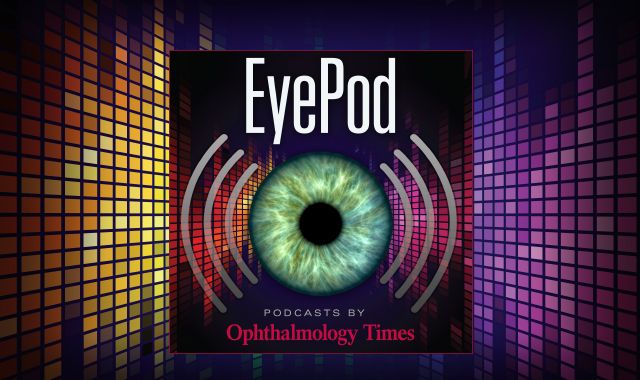News
Article
Gene therapy voretigene neparvovec boosts vision in pediatric IRD patients
Author(s):
Key Takeaways
- Voretigene neparvovec significantly improved visual function in pediatric RPE65-mediated IRD patients after 12 months, with no intraoperative complications.
- Best-corrected visual acuity improved significantly, but central macular and outer nuclear layer thicknesses remained unchanged.
Previous research has shown that voretigene neparvovec administered subretinally early in childhood for RPE65-mediated inherited retinal dystrophy achieved encouraging efficacious results.
(Image Credit: AdobeStock/Ilya)

Treatment with a subretinal injection of voretigene neparvovec (Luxturna, Spark Therapeutics) resulted in a significant increase in visual function at the 12 months evaluation in most treated pediatric patients with RPE65-mediated inherited retinal dystrophy (IRD),1 according to first author Alejandra Daruich, MD, PhD. She is from the Ophthalmology Department, Necker-Enfants Malades University Hospital, Paris Cité University, and INSERM, UMRS1138, Team 17, Sorbonne Paris Cité University, Centre de Recherche des Cordeliers, both in Paris.
Previous research has shown that voretigene neparvovec administered subretinally early in childhood for RPE65-mediated inherited retinal dystrophy achieved encouraging efficacious results,2-6 the authors explained. However, perifoveal chorioretinal atrophy developed in children who underwent post-market treatment.7
Daruich and colleagues conducted a retrospective study to determine the main outcomes and complications in pediatric patients after treatment with voretigene neparvovec. They reviewed the records of patients younger than 17 years who had undergone subretinal administration of voretigene neparvovec for confirmed biallelic RPE65-mediated IRD. Twelve months after treatment, the best-corrected visual acuity (BCVA) was measured, spectral-domain optical coherence tomography (SD-OCT) and ultra-wide-field fundus images were reviewed, and the Goldmann visual fields were analyzed.
The study included 12 eyes (6 patients; mean age, 7.8 years). The investigators reported, “No intraoperative complications occurred. The BCVA significantly improved at the 12-month follow-up (mean logarithm of the minimal angle of resolution BCVA, 1.0±0.8 at baseline vs. 0.6±0.3 at 12 months, p=0.001). The mean central macular thickness and central outer nuclear layer thickness did not change at 12 months follow-up. The visual field V4e isopter did not show significant changes.”
Regarding complications, 1 patient had elevated intraocular pressure bilaterally. The most common complication was atrophy on the injection site. The atrophy on the injection site was limited in all patients except 1, in whom the atrophy increased considerably.
Daruich and colleagues concluded, “…the majority of pediatric patients treated with voretigene neparvovec exhibited a significant increase in visual function at the 12-month follow-up. This improvement was not associated with structural changes in SD-OCT or intraoperative foveal detachment. The most common complication was atrophy at the injection site. None of the observed postoperative complications prevented gains in visual function. Long-term studies are expected to evaluate the evolution of retinal thickness and chorioretinal atrophy.”
The investigators also pointed out that no consensus has yet been reached regarding the indications for treatment with voretigene neparvovec in children. Long-term studies are expected to evaluate the evolution of VA and chorioretinal atrophy in these patients.
References
Daruich A, Rateaux M, Batté E, et al. 12-Month outcomes after voretigene neparvovec gene therapy in paediatric patients with RPE65-mediated inherited retinal dystrophy. Br J Ophthalmol. https://doi.org/10.1136/bjo-2024-326221
HauswirthWW, AlemanTS, KaushalS, et al. Treatment of Leber congenital amaurosis due to RPE65 mutations by ocular subretinal injection of adeno-associated virus gene vector: short-term results of a phase I trial.Hum Gene Ther. 2008;19:979–90. doi:10.1089/hum.2008.107
MaguireAM,SimonelliF, PierceEA, et al. Safety and efficacy of gene transfer for Leber’s congenital amaurosis.N Engl J Med. 2008;358:2240–8. doi:10.1056/NEJMoa0802315
BennettJ, WellmanJ, MarshallKA, et al. Safety and durability of effect of contralateral-eye administration of AAV2 gene therapy in patients with childhood-onset blindness caused by RPE65 mutations: a follow-on phase 1 trial.Lancet. 2016;388:661–72. doi:10.1016/S0140-6736(16)30371-3
Le MeurG, LebranchuP, BillaudF, et al. Safety and long-term efficacy of AAV4 gene therapy in patients with RPE65 Leber congenital amaurosis.Mol Ther. 2018;26:256–68. doi:10.1016/j.ymthe.2017.09.014
BainbridgeJWB, SmithAJ, BarkerSS, et al. Effect of gene therapy on visual function in Leber’s congenital amaurosis. N Engl J Med. 2008;358:2231–9. doi:10.1056/NEJMoa0802268
GangeWS, SiskRA, BesirliCG,et al. Perifoveal chorioretinal atrophy after subretinal voretigene neparvovec-rzyl for RPE65-mediated leber congenital amaurosis.Ophthalmol Retina. 2022;6:58–64. doi:10.1016/j.oret.2021.03.016
Newsletter
Don’t miss out—get Ophthalmology Times updates on the latest clinical advancements and expert interviews, straight to your inbox.





